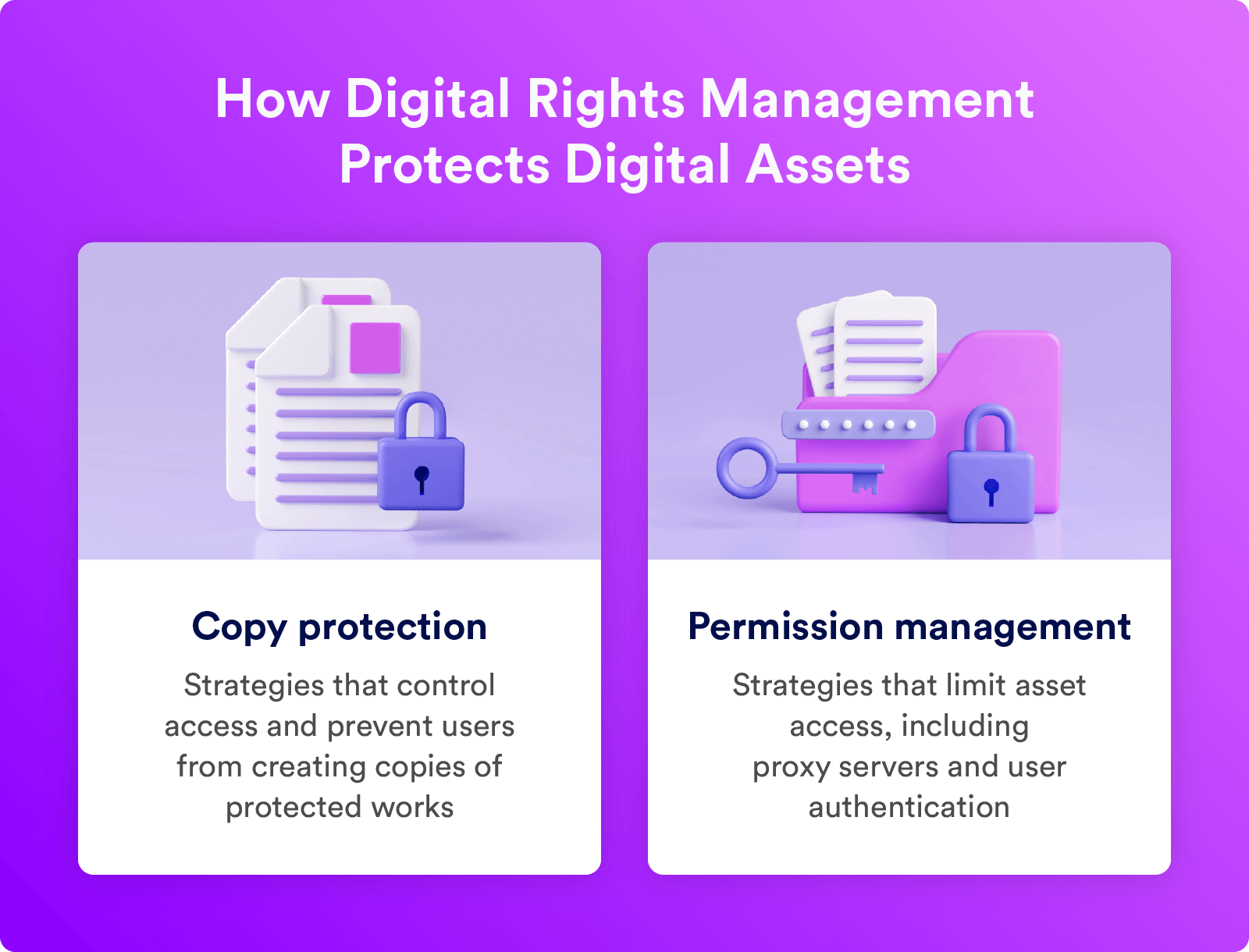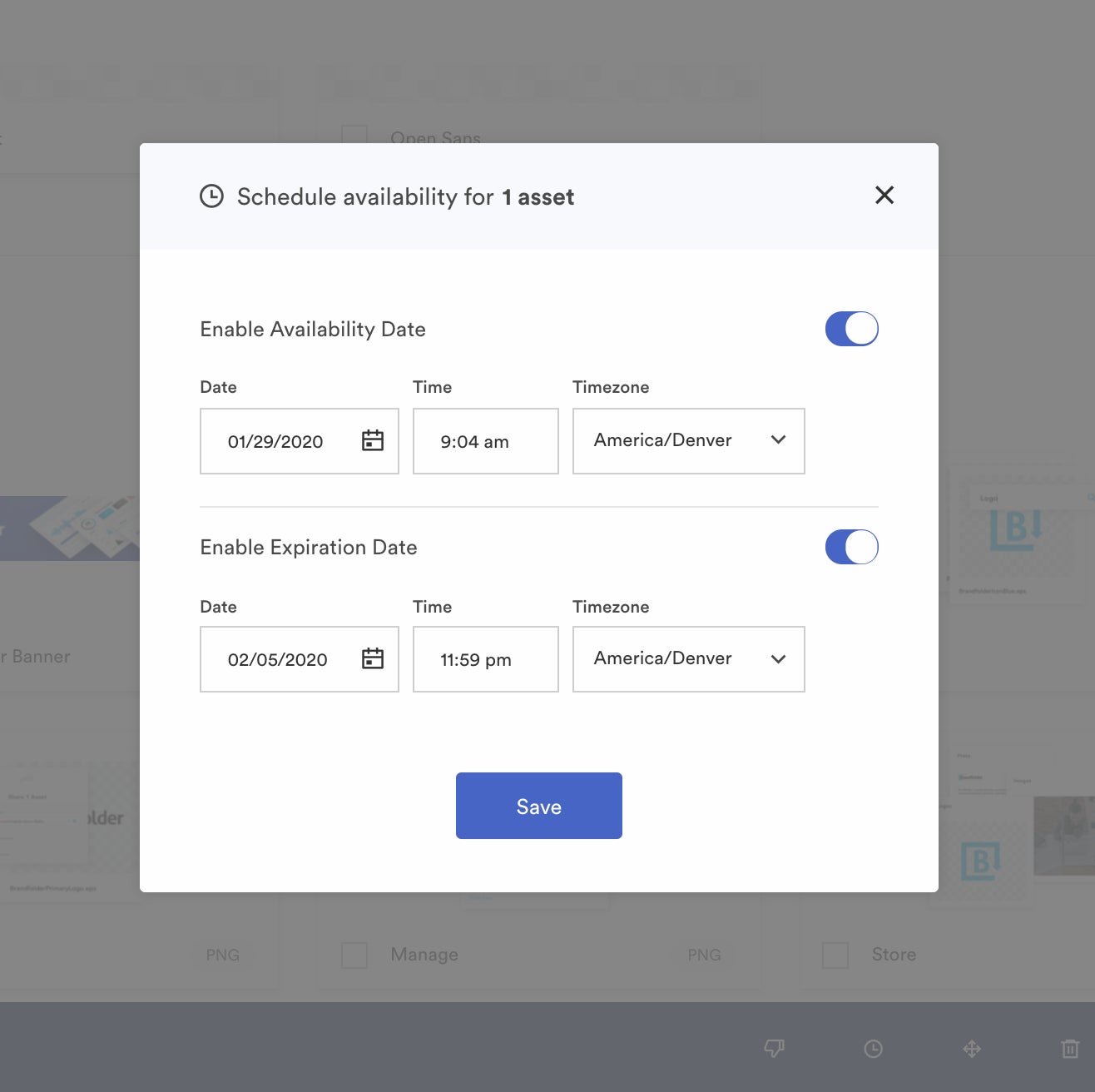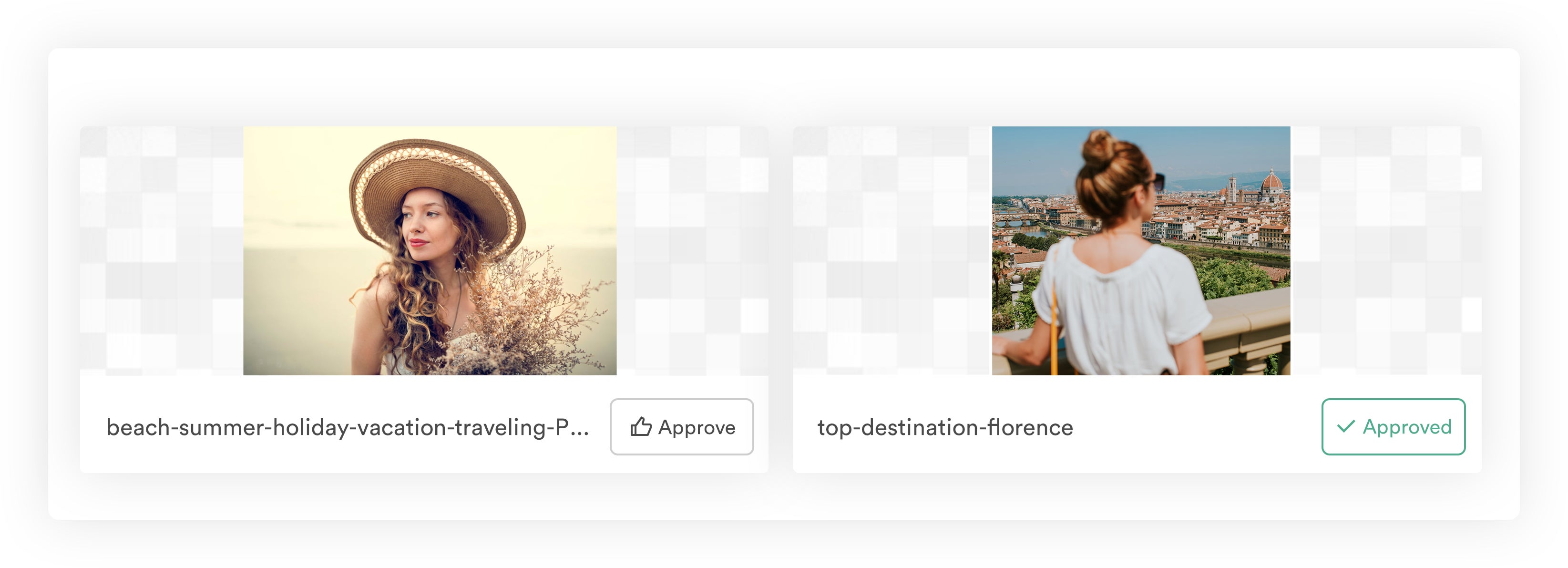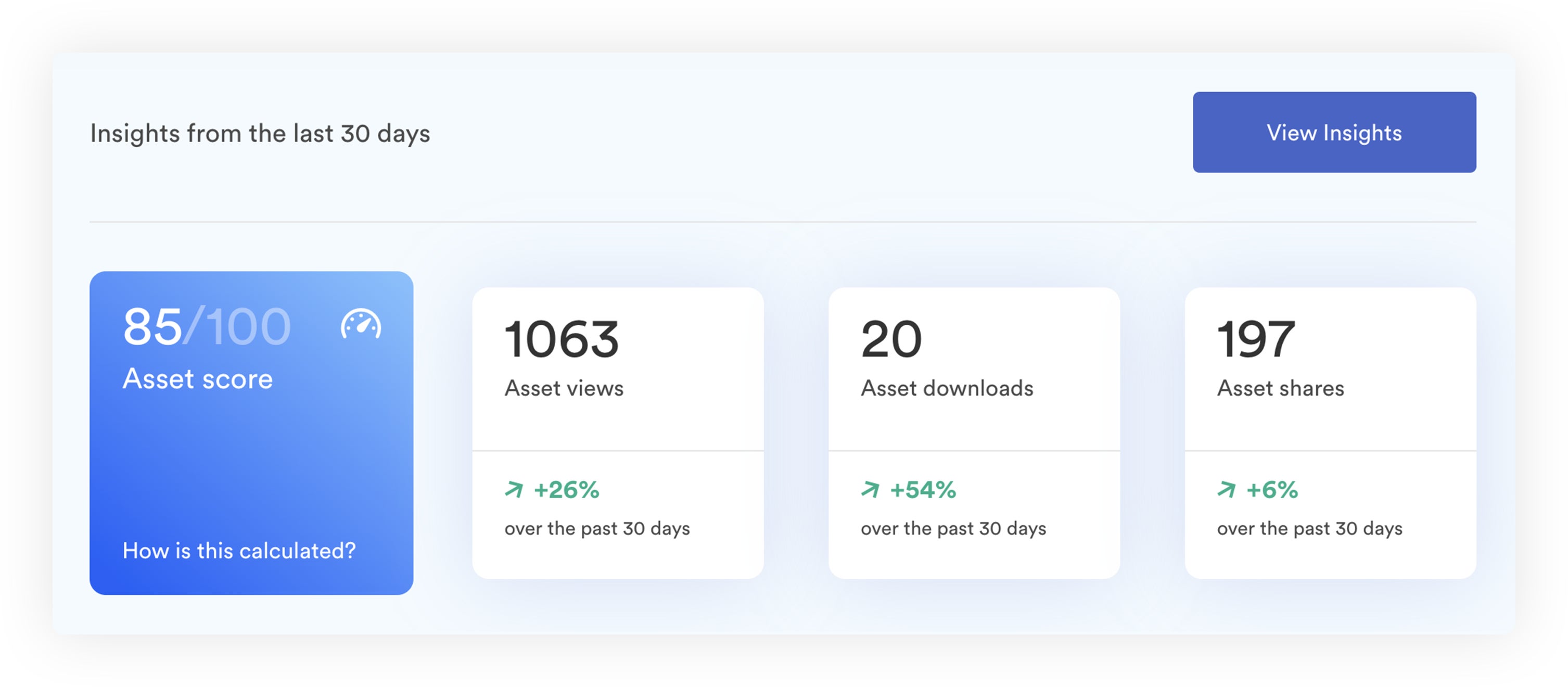Get branding tips and expert advice delivered straight to your inbox.
Piracy is a dangerous issue — digital pirates sailing the seas of the World Wide Web cause the U.S. economy to lose nearly $30 billion every year. Even with copyright laws in place, it’s far from easy to police the internet. When theft happens, it’s almost impossible to track the perpetrators.
But the good news is that digital rights management makes it almost impossible for anyone to steal protected content, saving both companies and creators from potential violations in the process.
In this post you’ll find valuable insights including what digital rights management is, the benefits of DRM, the secrets behind the DRM model, its common use cases in the data-driven age, and the key functions of DRM software.
What Is Digital Rights Management (DRM)?
Digital rights management is the application of systems and technologies to protect digital media against copyright infringement. At its core, digital rights management aims to identify and protect the rights of individuals and entities from third parties that use their intellectual property. Brands and agencies use DRM to manage their content libraries and stay compliant with ever-changing digital copyright regulations.
As restrictions on how people use and consume digital content grow, DRM is becoming a vital piece of the asset management system. Plus, modern consumer demands require content to be delivered faster and more efficiently than ever before.
Besides speedy creation and distribution, content management systems are simultaneously responsible for multiple types of media, channels, and collaborators. DRM software can provide additional assistance by tracking content storage use, digital asset utilization, and copyright expiration.

DRM vs. DAM
Digital rights management and digital asset management (DAM) are similar, but they vary in important ways. DAM software is used to store and manage digital content, while DRM software allows content owners and companies to control and monitor the use of their assets and creative property across an entire organization.
Digital asset management prioritizes the storage and organization of digital content — while DRM software takes asset management a step further by focusing on asset usage, digital watermarks, copyright security, and device restrictions, preventing unauthorized access to the content while also minimizing the unlicensed redistribution of digital media and proprietary software.
For instance, DAM software can store digital files like music and videos across devices, platforms, and channels, but DRM software restricts its usage to the media’s owners. Together, the two management systems can help brands streamline, automate, and protect campaigns and their assets.
Why Is Digital Rights Management Important?
Nobody likes a brand that steals content. Misusing or forgoing digital rights rules can seriously damage an artist’s as well as a business’s reputation. For example, YouTuber HopeScope’s review of brands who have stolen her videos for ads has been viewed over 3 million times and comment after comment reveals that plenty of viewers find this behavior creepy and alarming.
Even if your team isn’t blatantly ripping off a creator, they may still accidentally source material from a creator that requires proper attribution. Regardless of intent, the outcome is the same. DRM technology can help brands of all sizes protect their assets from potential theft and copyright infringement. All in all, DRM protects:
Cost: DRM software can protect brands from costs associated with fines, potential lawsuits, and long-term brand damage.
Visibility: There are many different timelines and ways to use assets, which can be time-consuming and prone to human error. Protected DRM visibility can decrease delays and costs.
Time: Without digital rights management, tracking all your digital rights can cause delays in launching campaigns and go-to-market plans. With it, team members at all levels can easily source, reference, and publish content with confidence.
Intellectual Property: Any company providing confidential or exclusive information to a select group of people must protect that information from unauthorized sharing. Using DRM technology, brands can make sure management can control access to valuable media.
Compensation: Creators don’t receive proper compensation when their work is stolen or released under false pretenses. Strong DRM systems can help ensure assets are protected and released only when authorized, so creators can collect appropriate payment for their work.
How Does DRM Work?
Digital rights management software uses an encryption application to protect digital assets. Security codes can limit access to certain personnel, periods, or devices, and manage the number of times content can be installed or opened.
DRM users can protect digital media in several ways by:
- Setting expiration dates on assets, after which users can no longer access it
- Limiting the number of times content may be accessed
- Restricting users from editing or saving content
- Preventing users from creating screenshots
- Restricting users from sharing or forwarding digital products or content
- Restricting users from printing content
- Locking access to specific IP addresses, locations, or devices
- Watermarking artworks and documents to establish ownership and identity
These protection actions can be classified into two categories:
Copy Protection: Strategies that control access to digital assets and prevent people from creating copies of any protected work fall under the category of copy protection. Some examples include fingerprinting, digital watermarks, rootkit software, and scrambling, which occurs when coded content can only be read or unlocked by specific software or devices.
Permission Management: Access limitations — software licenses and keys, proxy servers, virtual private networks (VPNs), user authentication, geoblocking, and IP authentication protocols — are considered permission managements.
By combining copy protections and permission management, DRM users can increase the security of their assets and enhance their digital control.

DRM Use Cases
DRM software can be used to protect a range of digital media content formats, including music, images, videos, e-books, proprietary business assets, database subscriptions, and software. DRM software can help creators and rightful owners safeguard against unauthorized use.
Creative Content
DRM technology helps prevent the unauthorized use of content owned by musicians, filmmakers, authors, and other creators. If people can freely share this type of content, the artists and producers will struggle to earn an income for their creations.
DRM software also protects creative works associated with brands, including logos, jingles, and other branded assets. Having a consistent brand image is critical to business success, so improper use of a company’s logo or campaign assets can be extremely damaging.
Software
In the age of software-as-a-service (SaaS), it’s imperative for technology companies to protect their valuable software products from piracy, especially since 57 percent of computer users have admitted to acquiring and using pirated software.
Due to this threat, digital rights management and digital asset management software for technology companies are essential for preventing software misuse. For instance, Microsoft users must acquire a personal user license and input their unique key before installing any Windows or Office software on their personal computer.
Enterprise Business Management
Enterprise digital rights management (EDRM) has grown into its own market, with Gartner projecting EDRM to be worth over $330 million by the end of 2026. Typically, enterprises rely on DRM software to protect critical data, especially in product design documents and merger and acquisition (M&A) plans.
Powerful digital rights management software can help enterprises rapidly deploy new campaigns and product concepts, stay compliant with regulatory laws, and protect enterprise content.
Client Content
Agencies are responsible for their client’s creations and campaigns. Whether your agency is responsible for a product launch, rebrand, or new sales page, there is a high expectation for data privacy and asset security.
Many agencies use DRM software to streamline workflows, as they can approve items directly in the platform and enhance the level of brand consistency across the campaign, even when working with in-house personnel and outsourced contractors.
Watermarking
DRM tools can provide creators with watermarking abilities, which can help track unauthorized asset usage and manipulation across all digital media. These visible graphics are placed over an image or design, publicly establishing ownership and staying connected to an author’s work even when it’s copied or transformed.
Watermarking not only leaves a visible mark, but also embeds an invisible ID into the asset's metadata. These IDs are not alterable by unauthorized users, and they can be used to track unaccredited asset usage.
Benefits of Digital Rights Management
Protection from copyright infringement and piracy is a massive benefit of DRM. However, there are additional digital rights management benefits worth considering:

- Accelerated Production and Distribution: Clear terms of usage and a searchable internal asset database allow teams to confidently use digital content without having to repeatedly double-check information, ask for permission, and manually look up expiration dates.
- Reduced Risk: Penalty risks decrease when companies consistently record information about the use and reuse of digital assets. Plus, DRM software allows you to visualize where and how assets can be used in a self-service platform.
- Controlled Asset Usage: DRM software can help companies control the use of digital assets between internal and external stakeholders. Plus, organizations can create and enforce their own asset usage rules and expectations with DRM technology.
- Guaranteed Ownership Rights: Authors and artists typically spend months or even years bringing their creative visions to life. DRM stops others from stealing this content, and therefore, keeps the power in the hands of the rightful owners.
- Protected Income Streams: DRM ensures that only paying customers can control access to copyrighted products, which helps maximize the income from each release and decreases the possibility that someone other than the creator receives income.
- Increased Education: While individuals may know about copyright details, very few actually pay attention to their usage rights. DRM software can provide immediate answers to copyright infringement questions, which helps customers use intellectual property correctly.
- Secured Privacy: DRM technology can enhance the security of private and sensitive documents, projects, and digital assets. Organizations can approve or deny asset authorization to any team member or stakeholder.
5 Key Functions of DRM Software
If you want to use DRM technology to protect your products or media, there are several key functions you should look for when choosing a DRM content service.
1. Format Protection

While documents may be one of the most common media formats companies need to protect, the best digital rights management systems go far beyond Word docs and digital file protection. Even if you don’t use other file types often, it’s wise to look for a system that offers protection for a wide range of media, including images, audio, and video.
- Tip: Brandfolder by Smartsheet supports all file formats, including text, images, video, audio, and other formats.
2. Asset Availability Control

Being able to control asset availability is crucial. You should be able to use your DRM technology to configure privacy settings — either open your media products for public access or restrict users to private viewing if they are internal resources.
- Tip: Brandfolder helps users customize their asset availability and organize media to streamline workflows and minimize access requests.
3. Asset Expiration Dates

Certain products, like software, are offered on a subscription basis. Creators and copyright holders must ensure that users cannot access products or assets once their subscription expires. With DRM software, you can set expiration dates in line with licensing rights to prevent unauthorized use.
- Tip: Brandfolder has a user-friendly interface that helps users manage expiration dates and automate access to expired assets. You can also set up alerts for when an asset is about to expire.
4. Asset Approval

Ideally, companies should have someone who oversees and controls access and usage to digital media assets within the organization. Monitoring access can add another layer of essential protection, ensuring critical information is not easily leaked or compromised.
- Tip: Brandfolder allows select administrators to approve assets, consider access requests, and grant permissions to other people in the company.
5. Data Analytics

If you tap into the power of data analytics, you can gauge engagement and see which of your assets are the most valuable. Data analytics can also give you a better understanding of how assets drive internal innovation and learning, foster external engagement with prospects and customers, and ultimately, generate a positive return on investment (ROI).
- Tip: Brandfolder allows users to see the most engaged media, the top users, and the performance of all assets in the company, which are accessible in a centralized dashboard that makes it easy to track all asset interactions.
Experience a Better Way To Manage Digital Rights
Digital rights management systems don’t need to be complicated. With Brandfolder, an intuitive, easy-to-use DAM system with DRM features, you can simplify the way your team organizes, distributes, uses, and protects digital content.
When uploading assets to our platform, all embedded metadata — EXIF, IPTC, and compliance or rights information — is searchable, can trigger automations to enforce compliance policy, and can contain publish and expiration dates. With help from our custom DRM restrictions and controlled access, you can rest assured the right people have access to the right materials.
We even offer Brand Intelligence, which uses AI and machine learning to analyze your assets and find out where they're being used. And through Brandfolder Insights, teams can see how many customers and potential leads are accessing their content and what assets they're downloading. Take the dive today to see how our digital asset management tool delivers high-quality DRM.
